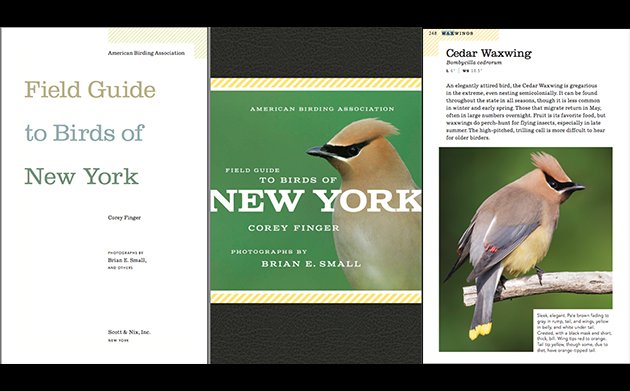
It’s here! It’s here! The American Birding Association Field Guide to Birds of New York by Corey Finger, birder, blogger, and co-emperor of 10,000 Birds, with photographs by Brian E. Small, has made its way to all major bookstores and book purchasing web sites. We at 10,000 Birds are so excited, we’ve decided to give away a copy of this excellent guide.
Here is what you need to do: Send me a brief description of the best bird you’ve ever seen in New York State–name of species, where you saw it, when, and why this is a bird that has stayed in your memory. If you’ve never birded New York State, send me a brief description of a bird you would like to see in the state and why. A glance at the Checklist of the Birds of NYS from the NYS Ornithological Association, (and also in the back of the book) may help spark some good memories or inspire bird dreams.
Send your entry to me at queensgirl30@gmail.com with the heading “NYS Birds Giveaway”. You are also welcome to answer these questions in the comment section, but it will be hard to select you as a winner if we don’t have your email address. We reserve the right to use answers in a future 10,000 Birds posting.
I will select the winner of a copy of American Birding Association Field Guide to Birds of New York by putting all entries into my NYSOA cap, shaking it up, and picking out one terrific comment about the birds of NYS with my eyes closed.
So, now that you’ve sent your giveaway entry off, here’s a little bit more about Corey’s field guide.
The ABA Field Guide to Birds of New York, part of the ABA field guide series, covers 285 out of the 490 birds on the New York State checklist (reprinted at the back of the book). It’s a guide for beginning and intermediate birders–how to identify the birds you are most likely to see in the city, suburbs and wilds of New York State, and where.
Here are 5 things I really like about this guide:
1. You can tell that it is written by a birder who learned how to bird in New York State. Corey not only knows the common and uncommon birds, he knows migration patterns and hotspots. Each species account includes tips on where and when to find the bird in the state. Short-eared Owls, for example, are likely to be found in winter flying over open fields at Shawangunk Grasslands, Fort Edward, and during migration over coastal salt marshes. Even more specifically, in what other field guide can you find out that Purple Martins can be seen at the New Paltz exit of the NYS Thruway?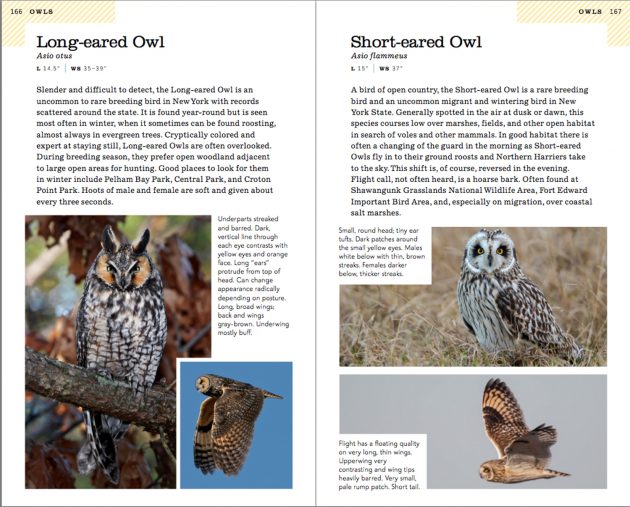
2. It has a sense of history. Bicknell’s Thrush was discovered in NYS in 1881 by Eugene Bicknell; you can still find it on Slide Mountain. An immense irruption of Evening Grosbeak occurred in 1962, “when thousands were in the New York City area alone.” Monk Parakeets were the subject of an unsuccessful eradication campaign in the 1970’s. Having a historical sense is good for many reasons. It helps us think about birds and birding as an ever changing process, and it enhances the birding experience, making it more than just getting the “tick.”
3. Facing the challenge of writing up each species in one paragraph, Corey makes the most of limited space. Bobolink sports “punk-rocker plumage,” Chestnut-sided Warbler is “tail-cocking, wing-drooping and colorful,” American Coot is a “black butterball of a bird….an endearing and adorable part of our bird life.” I’m not sure if I agree with the latter, but I respect a bird writer who is not afraid to use the word ‘adorable’ or, ‘cute,’ as he does with Pied-billed Grebe (and, that I agree with).
4. The photographs by Brian E. Small and additional bird photographers, including Alan Murphy, Mike Danzenbaker, Jim Zipp, and Garth McElroy, are all excellent field guide photos–showing important field marks. They are also often beautiful in their own right, particularly when a species gets a two-page spread. Just look at this Peregrine Falcon soaring up and swooping down!
5. The guide begins with A New York Birding Year, listing, month by month, how to get the most out of birding New York State. This is a state that borders Lake Ontario and Canada on the north, Lake Erie on the west, and the Atlantic Ocean on the southeast. It includes both the urban birdiness of Central Park and the wilds of the Adirondacks (and you can get an idea of where all that is located from the map on the inside front cover). The NY Birding Year section does a great job of covering the breadth of habitat in the state, listing well and lesser-known areas and not forgetting the fun of rarity chasing in January and backyard feeder birding in February. It almost makes me long for winter again, so I can go out to Montauk Point to see the grand expanse of scoters and eiders with Razorbills flying in the distance.
American Birding Association Field Guide to Birds of New York by Corey Finger, Photographs by Brian E. Small. American Birding Association State Field series, Scott & Nix, Inc., 2016. 352 pages, 7.2 x 4.5 inches. ISBN-10: 193562251X; ISBN-13: 978-1935622512


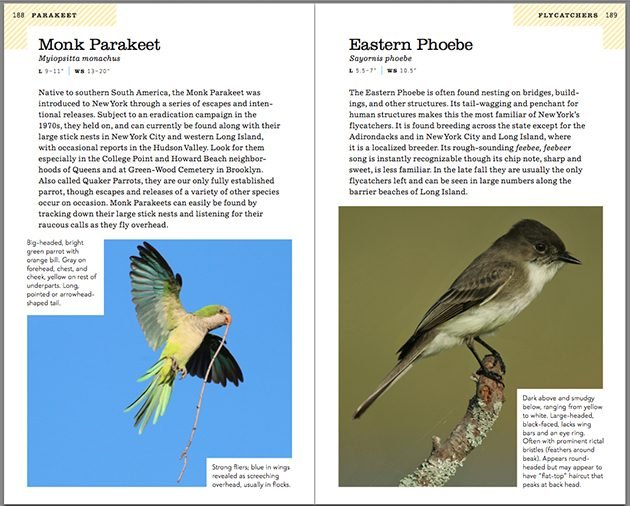
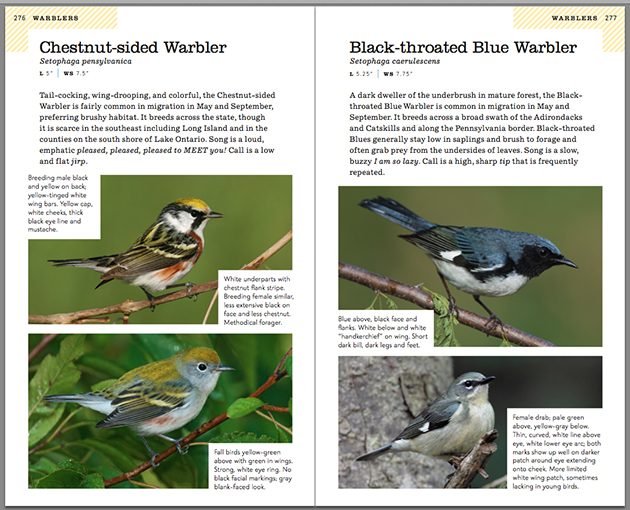
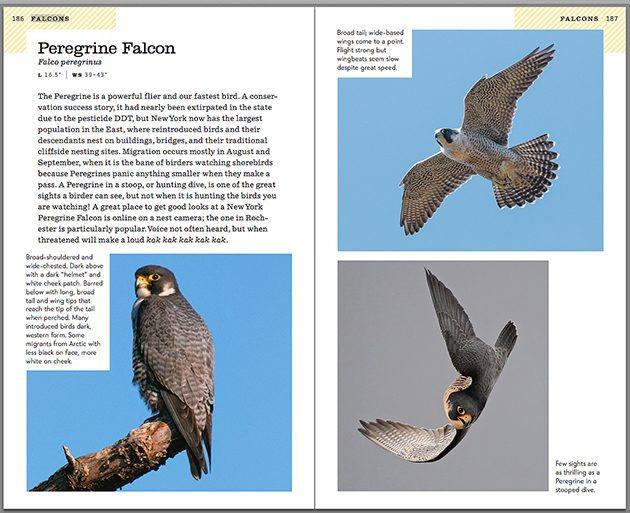
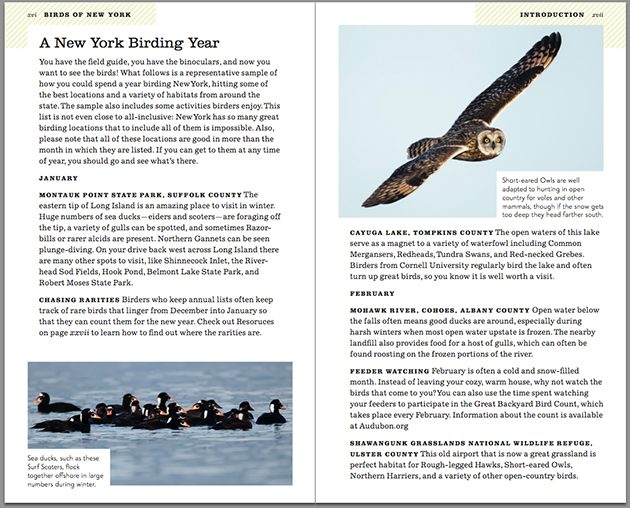











Deadline: Midnight, Monday night, that space between June 13th and June 14th.